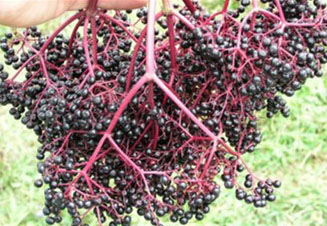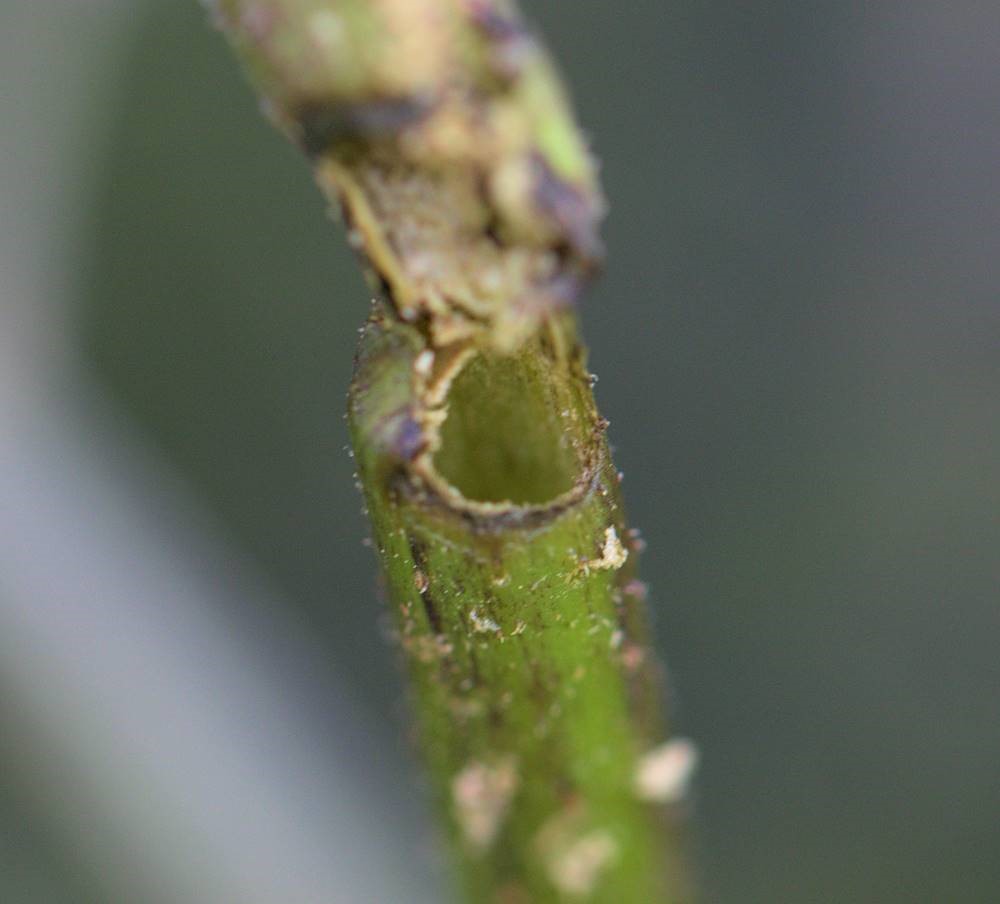Growing elderberry in the garden
Identify the right conditions and potential pests before selecting elderberry for your smart garden.

Aesthetics, jam, pie, wine and medicinal use are among the reasons Michigan gardeners include elderberries (Sambucus canadensis) in their garden. Along with its human benefits, the fruits are a food source for birds. Elderberries are wind-pollinated, but their flowers attract butterflies and other floral-visiting insects.
Elderberry is a native plant growing bush-like to heights of 6 to 12 feet, depending on site conditions (Photo 1). Each bush sends up many canes that flower and fruit, primarily in their second and third years. The tiny purple elderberries generally become ripe in late August (Photo 2).

Smart conditions suitable for growing elderberry
Elderberry grows in medium to wet soils and can tolerate clay soils if there is good drainage. If you have poorly drained soils, try planting on a berm to increase the chance of success. This plant tolerates full sun or partial shade, requires soil pH between 5.5 and 6.5, and can grow across much of Michigan being hardy through USDA Zone 4a.
Plant elderberry in spring after the final frost using bare root one-year old plants. To avoid competition, remove perennial weeds from the planting area. In the first year, remove flowers after blooming to enhance root growth and structure instead of fruit production. Do not add fertilizer at planting time, although an annual application in later years will assist fertility. If you are unsure whether your soil conditions are appropriate for elderberry production, get a Michigan State University Extension Home Lawn and Garden Soil Test to determine the necessary nutrient and organic matter needs.
Elderberry spreads through root suckers, and these should be pruned in late winter to avoid populations that naturalize over a large area. Though plants do not require annual pruning for fruit production, an annual or biannual pruning of older and damaged stems will help produce new growth from which fruits will be produced. Struggling elderberries can be pruned completely to the ground. While this lengthens the time of fruit production, it removes diseased stems that could be the cause of decline. As new elderberry cultivars are introduced, it is best to confirm with the fruit supplier whether the plant is tolerant of a complete pruning.
Possible insects and wildlife issues
Plants show some resistance to deer, and they could be a useful addition at the edge of a garden as a deterrent. If growing elderberries specifically for the fruit, you can drape netting over maturing fruit to prevent birds from eating the crop.
Several pests including spotted wing Drosophila and borers can affect elderberry growth. Fruits can be damaged by the invasive spotted wing Drosophila, a fly whose larvae affect ripe and unripe fruit. Few non-insecticide options are available to manage spotted wing Drosophila, although placing plastic mulches around plant bases can deter flies from laying eggs and prevent the larvae from pupating in the soil. MSU Extension suggests other control options for the home gardener.

A few species of generalist moths, such as common stalk borer (Papaipema nebris), lay their eggs inside stems, and the brightly colored elderberry borer (Desmocerus palliates) lays eggs at the lower stem base near the roots. Their developing larvae, called borers, lead to wilting stems (Photo 3) and flagging in flowers (Photo 4). If you spot a drooping stem, inspect the stem for an entry hole and cut the stem to determine if a small caterpillar is inside. Japanese beetles are another possible pest, and their feeding on foliage will lead to severe damage if insects are not hand-picked off.

The major pathogen of concern is elderberry rust, a fungus that produces orange growth on leaf blades and causes leaves to curl. Carex sedges are alternate hosts for the rust, and gardens with this plant have an elevated risk of seeing elderberry rust. Fruit yield may be reduced on plants when multiple leaves show rust symptoms. Remove affected twigs and destroy to prevent further spread of disease.
Remember smart gardening concepts when selecting a new fruit to plant. If you choose the right site and recognize common pitfalls affecting plant health, your plants will be healthier and less susceptible to pests and diseases.



 Print
Print Email
Email




